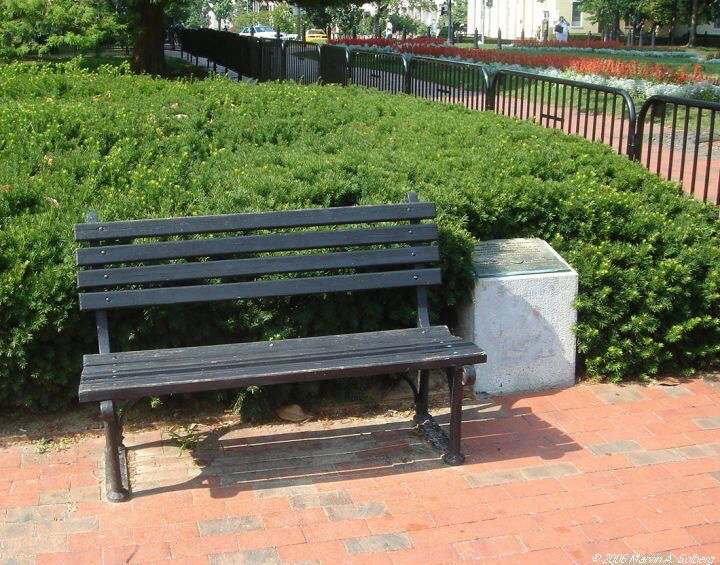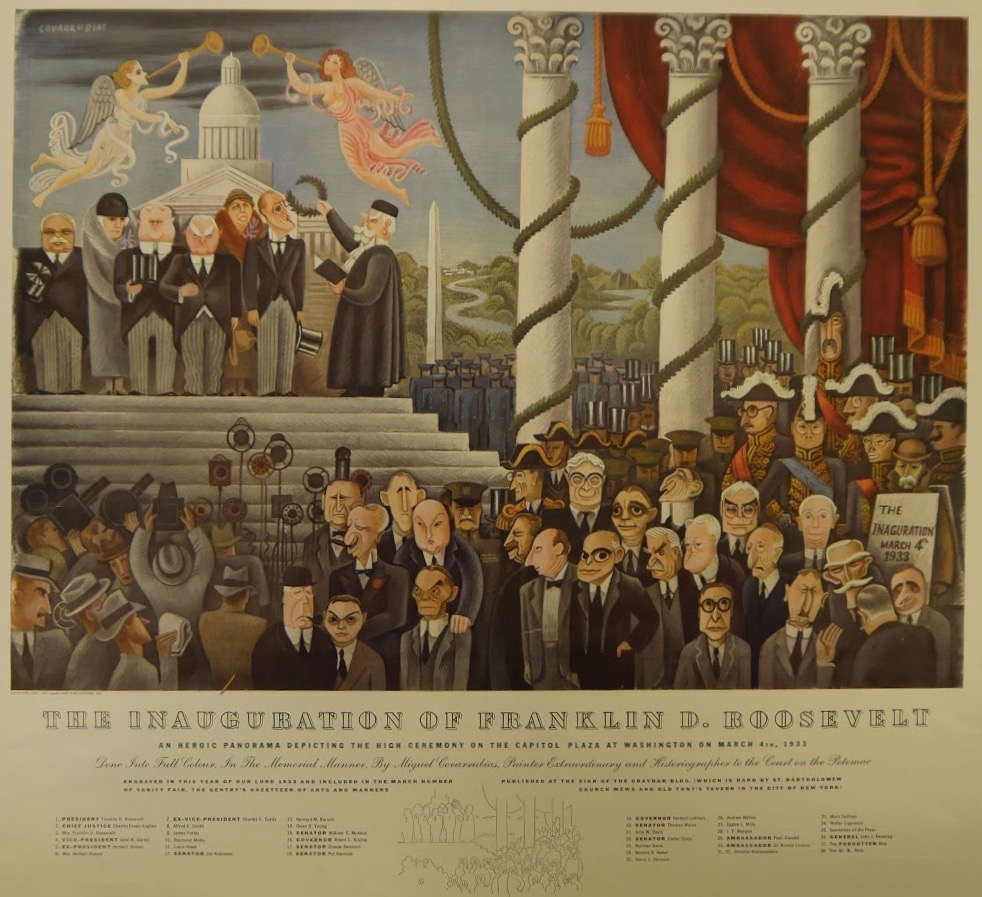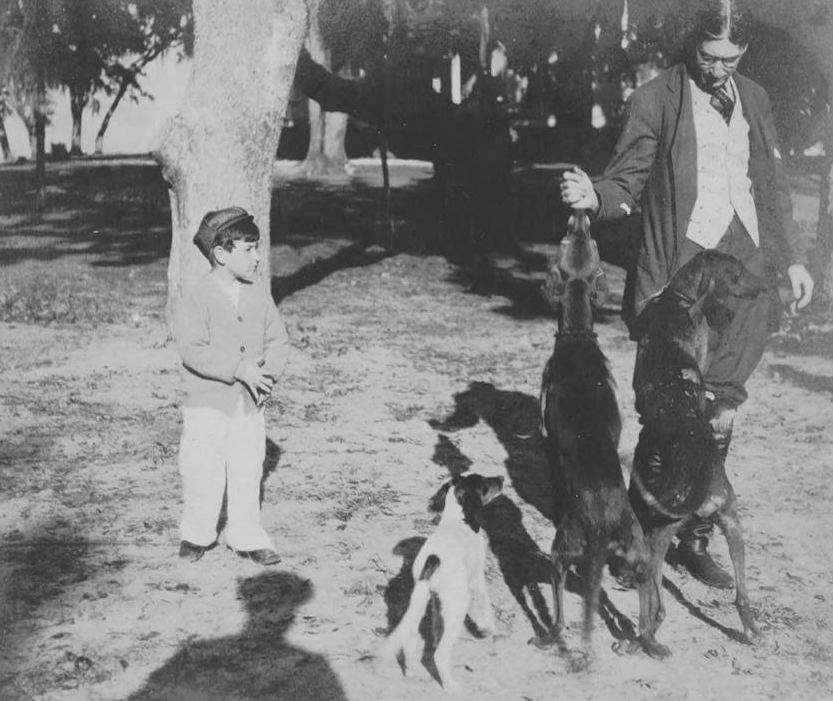Bernard Baruch and Eleanor Roosevelt trusted and admired each other, and he donated generously to her favorite causes, particularly the Subsistence Homestead program. This project, dear to Eleanor Roosevelt’s heart, sought to create self-sustaining communities in low-income rural areas. Baruch supported the program publicly but he wrote in his autobiography that “planners in Washington, with no conception of local needs and problems, soon made chaos of this venture.” Nevertheless, he and Mrs. Roosevelt remained good friends. In a press statement issued at her death in 1962 he wrote:
Mrs. Roosevelt’s death is a blow to me; we were friends for almost fifty years. I will miss her greatly as will all her friends and the millions of men and women in every country to whom she was First Lady of the World. She was a rare combination of wisdom and goodness.
Statement to the press, 1962
This pillow is embroidered with "The Park Bench Statesman," a term that was often applied to Bernard Baruch, who had the habit of discussing finance and politics on benches in Lafayette Park near the White House and in New York’s Central Park. Baruch’s reasons for creating a park bench office are not entirely clear. According to Jordan Schwarz, one of his biographers, in 1941 Baruch staged a photograph of himself “holding court” on one of these park benches, surrounded by government officials, with two famous economists at his feet. This annoyed FDR, who accused him of grandstanding.
Into the Eisenhower administration, Bernard Baruch played an important, if sometimes behind-the-scenes, role in American government. His words of reflection in his memoir, written in 1960, are still pertinent today:
As I think of the Presidents I have known, from Woodrow Wilson to Dwight Eisenhower, what impresses me is the increasing complexity and burden of the office they held...Fifty years ago a President could make an inaugural address, as Woodrow Wilson did, without one reference to foreign affairs. Today, the President must be concerned and informed - because our fate is involved - with revolution in Asia, political developments in Africa, economic crisis in Latin America...Never before has the world faced such peril as it does today.
The Public Years

Franklin D. Roosevelt was inaugurated as President of the United States for the first time in 1933, at the height of the Great Depression. This satirical cartoon, entitled “An Heroic Panorama Depicting the High Ceremony on the Capitol Plaza at Washington on March 4th, 1933,” portrays Roosevelt being crowned with a wreath. Below the steps is a group of luminaries, including Bernard Baruch, who are identified by a key. It was in this address that Roosevelt made his famous claim, “The only thing we have to fear is fear itself.”
Although Baruch called himself an "observer and a critic" of the New Deal, he admired Roosevelt. In his memoir he wrote that, "Washington has never seen anything like those first three months of F.D.R.'s Administration. A steady flood of ideas emanated from the White House, and were quickly translated into action during the famous Hundred Days."

Bernard Baruch, Jr. was Bernard and Annie Baruch’s middle child and only son. Like his older sister, Belle, Junior was a first-rate marksman, known by age eight as a natural shot. During the time the Baruch children were growing up ducks were abundant at Hobcaw and Junior excelled as a duck caller. His highly successful hunts were reported on in the local newspapers. According to The Georgetown Daily Item, “The boy slipped out to the marshes all unknown to his family and his father was much pleased when he returned with a bag full of ducks.”
Bernard Baruch, Jr. graduated from Harvard, was a Captain in the U.S. Navy and a member of the New York Stock Exchange. He married but had no children. As adults, he and Belle grew estranged over her homosexuality and rarely saw each other. On the other hand, he and Minnie Kennedy, daughter of Baruch staffers Daisy and William Kennedy, were lifelong friends, and he visited her at her home in Georgetown after she retired in 1988. Junior died in 1992 in New York City at the age of 90.

In 1946, President Harry Truman appointed Bernard Baruch the U.S.representative to the United Nations Atomic Energy Commission. Baruch selected John M. Hancock, Herbert Bayard Swope, Ferdinand Eberstatdt and Fred Serles, Jr., as his advisors and fellow delegates to the UNAEC. In the cartoon on the wall above the bed, the five men are depicted as Musketeers and Baruch holds a scroll entitled “The Baruch Plan.”
In this newsreel from June 14, 1946, Baruch addresses the first meeting of the UNAEC, presenting the Baruch Plan for the control of atomic energy and weapons. Although Baruch warned the commission they would be making, "a choice between the quick and the dead," his plan was not adopted.